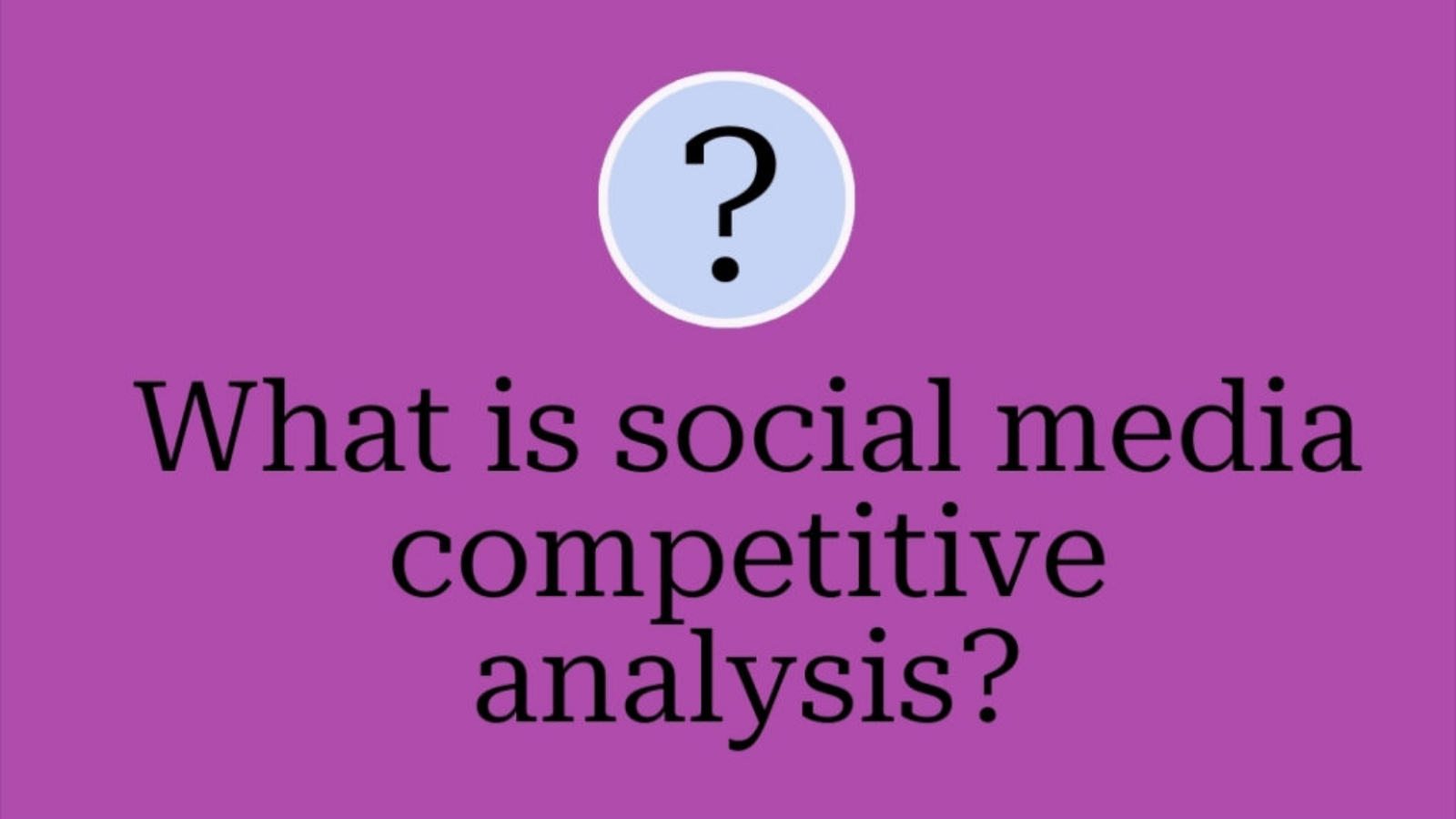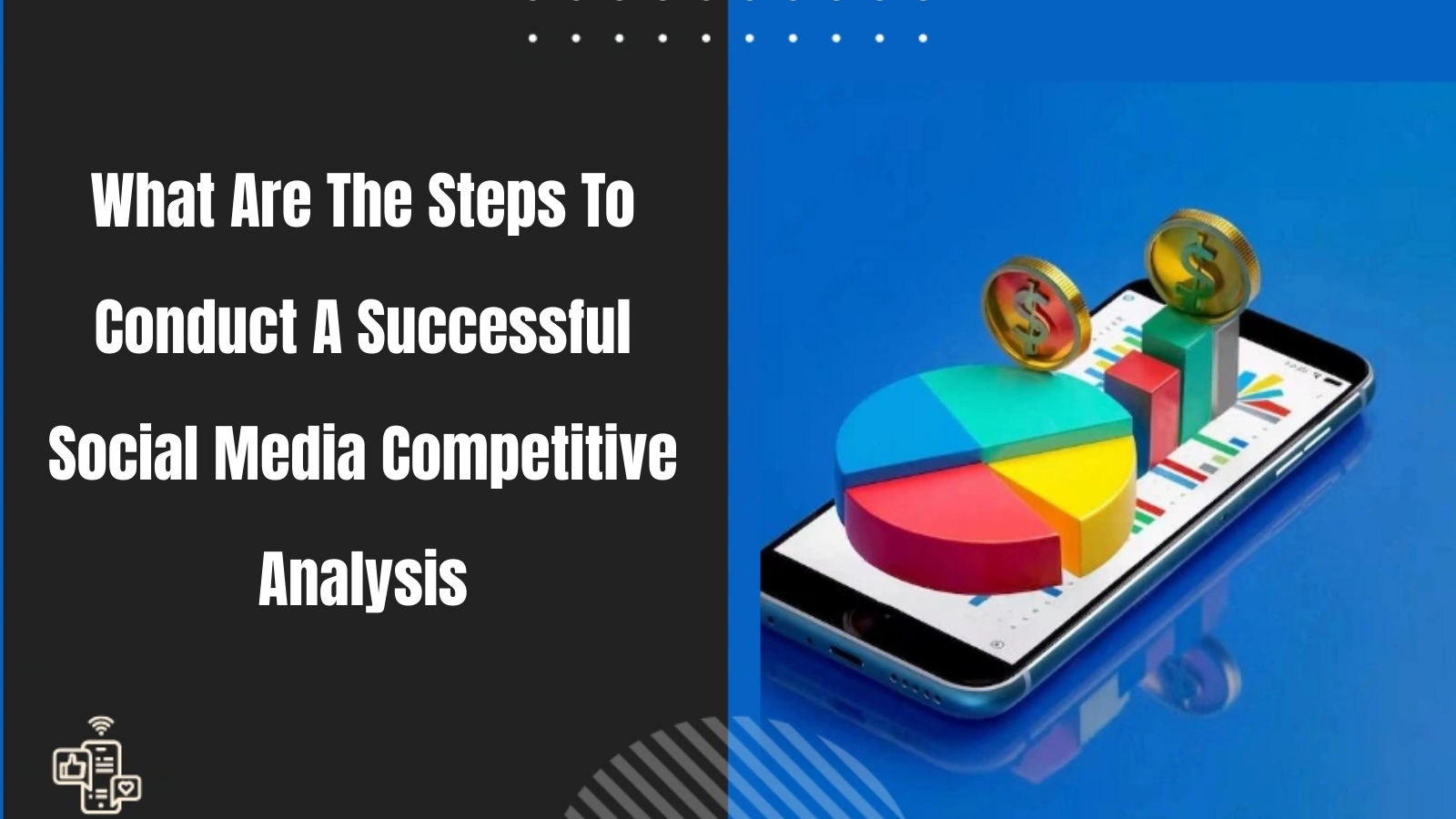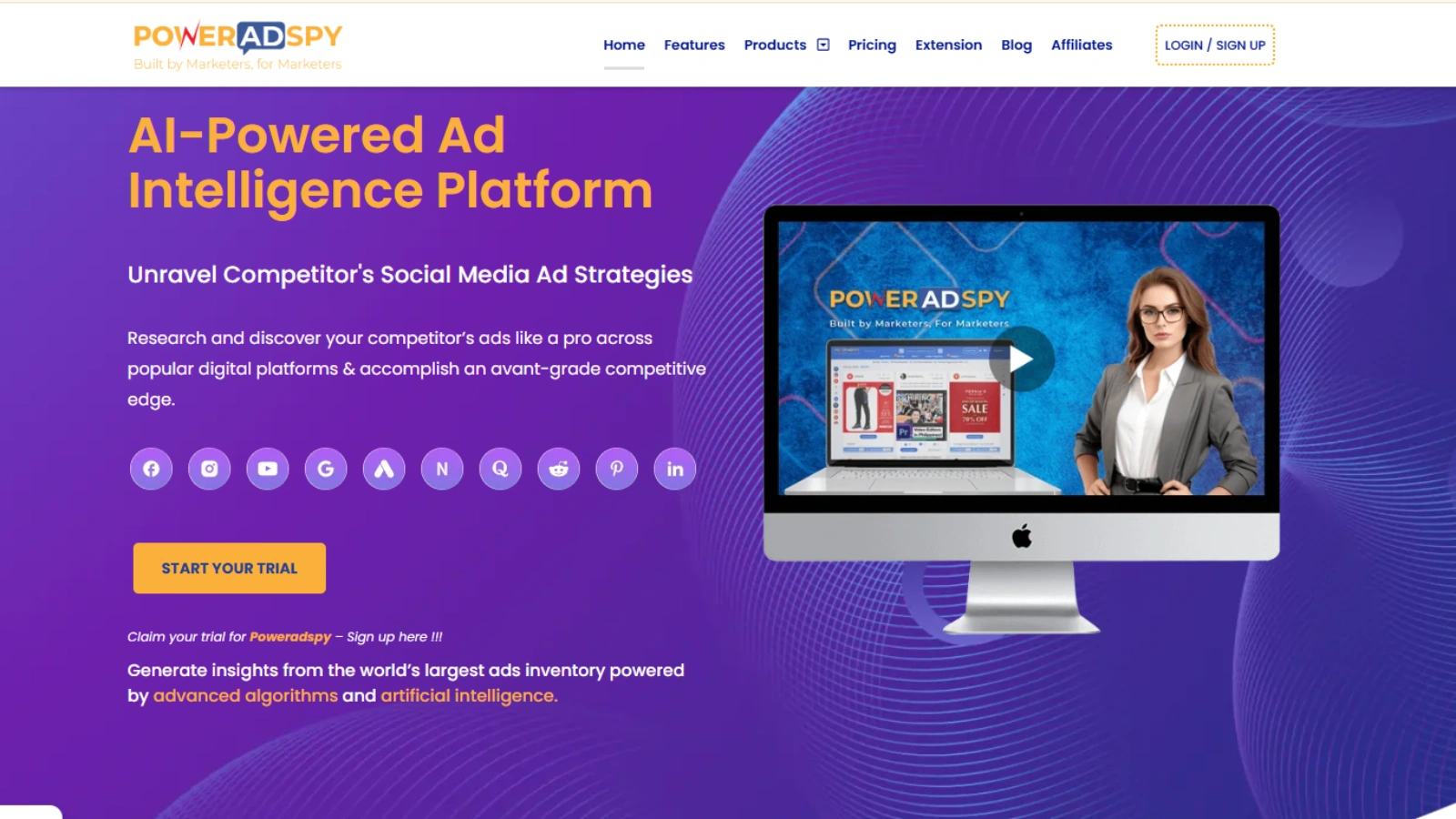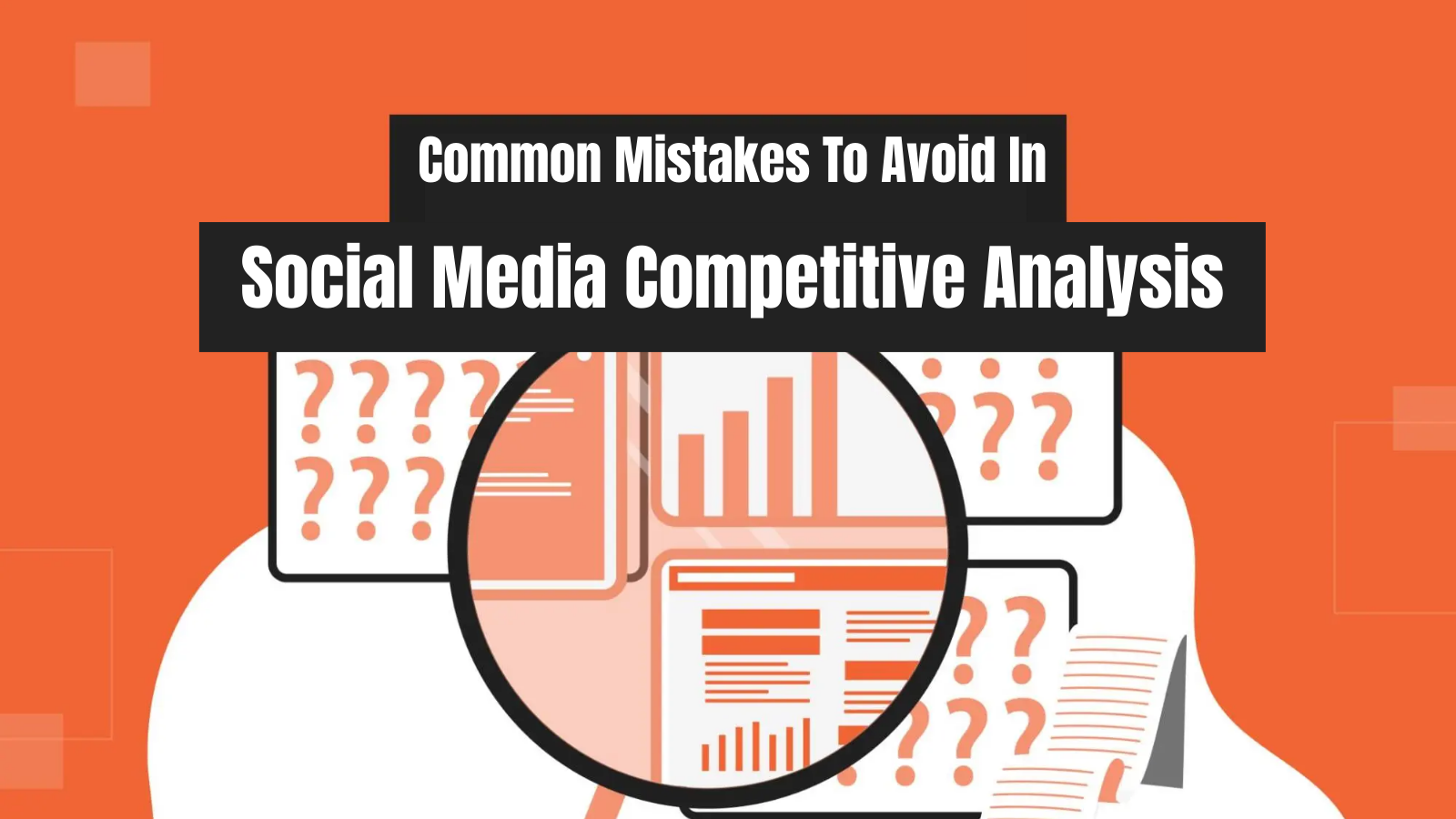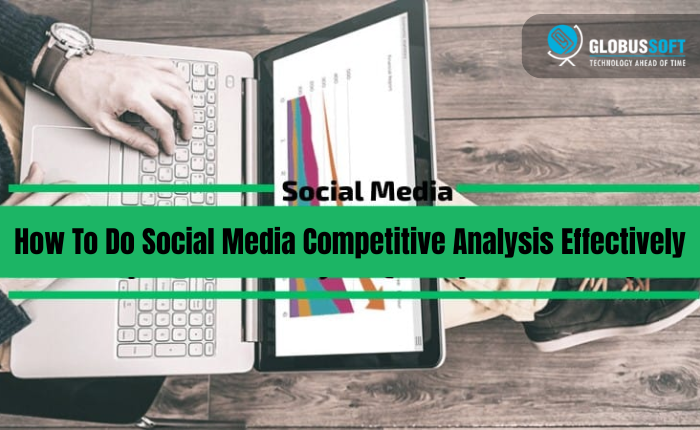
Social media isn’t just about creating posts and hoping they go viral. Behind every successful brand, there’s a strategy built on research, insights, and competitive benchmarking. That’s where social media competitive analysis comes in, a process that helps you understand your competitors’ moves, uncover opportunities, and shape a stronger presence for your brand.
In this guide, we’ll explore what social media competitive analysis is, why it matters, how to do it effectively, and the best tools that make the process seamless. You’ll also discover practical strategies and expert tips to gain an edge in today’s crowded digital landscape
In a hurry? Listen to the blog instead!
What Is Social Media Competitive Analysis?
Social media competitive analysis is the practice of monitoring, evaluating, and learning from your competitors’ social media activities. It involves tracking their content, engagement rates, audience growth, paid ads, and overall digital presence. The goal? To identify what works in your industry, spot gaps, and implement strategies that give you an edge.
By conducting regular social media competitive analysis, you also get a clearer picture of industry benchmarks. It helps you recognize emerging trends early, adapt your campaigns to meet audience expectations, and avoid repeating mistakes made by competitors. Over time, this turns your strategy from reactive to proactive, giving your brand a sustainable competitive advantage
Instead of making blind guesses, you gain clarity by answering key questions:
- Which type of content connects best with your audience?
- Which platforms should you prioritize?
- How often should you post?
- What ad strategies are generating results for others?
Incorporating social media automation makes this process even more efficient. Automation tools allow you to schedule posts, monitor engagement, and generate performance reports across multiple platforms with minimal manual effort. By combining competitive insights with automation, your brand can respond quickly to trends, maintain consistent posting, and focus on creative strategies that truly drive results.
This process ensures that your brand isn’t just participating in social media, it’s competing strategically.
Why Social Media Competitive Analysis Matters?
Without social media competitive analysis, you risk falling behind competitors who are paying close attention to the market. Here are some core benefits:
Uncover Market Trends:
Competitive analysis helps you spot emerging topics, content formats, or campaign styles before they become widespread. For example, if multiple competitors suddenly shift toward short-form videos, it signals a growing trend worth considering.
Benchmark Performance:
Instead of guessing how well you’re doing, you can compare key metrics like engagement rate, follower growth, and content reach against your competitors. This gives you a realistic view of where you stand and where improvement is needed.
Improve Content Strategy:
By studying which posts get the highest likes, comments, and shares for others, you learn what resonates most with your shared audience. You can then replicate the winning elements, such as tone, visuals, or posting time, while adding your unique twist.
Optimize Paid Campaigns:
Tracking competitor ad creatives, targeting methods, and formats provides insights into what’s working in paid promotions. This not only helps you avoid wasting budget on underperforming ads but also inspires higher-performing campaigns.
Enhance Customer Understanding:
Watching how audiences react to competitor content, positive comments, common complaints, or FAQs, gives you direct insights into customer expectations. This helps you tailor your messaging and offers to better meet their needs.
In short, this analysis turns competitors’ successes into your roadmap for growth while minimizing guesswork.
Also Read:
How Can Social Media Automation Boost Your Content Strategy?
What Are The Steps To Conduct A Successful Social Media Competitive Analysis?
Running a social media competitive analysis goes beyond just scrolling through a competitor’s feed. It’s a strategic process that helps you uncover insights, sharpen your content approach, and position your brand more effectively in the market.
Here’s how you can do it step by step:
Identify Your Key Competitors:
Start by creating a clear list of competitors that matter most to your brand. Look beyond just companies offering the same product and include those who are capturing your target audience’s attention with different offerings.
For example, if you run a skincare brand, a lifestyle influencer or wellness brand can still be a competitor because they’re attracting the same audience you want to reach. A broad competitor set ensures you don’t miss hidden threats or untapped opportunities.
Select the Right Metrics:
A strong competitive analysis depends on choosing metrics that align with your goals. If you want better engagement, monitor likes, comments, shares, and video completion rates. For growth, track follower numbers, posting frequency, and ad spend. And for conversions, analyze campaign reach and call-to-action effectiveness.
The right metrics serve as your compass, helping you avoid drowning in irrelevant data and focus only on what drives results.
Gather Data Systematically:
Randomly checking competitor accounts won’t give you real insights. Instead, adopt a structured approach using social listening tools, analytics platforms, or even manual monthly check-ins to record performance data consistently.
This systematic method helps you separate short-term spikes (like viral posts) from long-term strategies (like consistent content themes), giving you a clearer picture of what actually works over time.
Analyze Content Strategy:
Examine the type of content competitors rely on and how they deliver it. Do they use reels, carousels, or static posts? Are their captions short and witty or long and educational? Notice how they package their brand voice, colors, and visual identity.
By decoding these details, you’ll uncover what style or format resonates with the shared audience, which can guide you to create content that matches or outshines their appeal.
Study Paid Ads:
Competitors often reveal their biggest priorities through paid campaigns. By reviewing their ad creatives, targeting styles, offers, and call-to-actions, you can figure out what messages they’re investing heavily in.
This gives you clues about which products or services they want to push and what value propositions are working in the market. You can then design smarter ads, borrowing the best practices while avoiding their mistakes.
Identify Opportunities:
Every competitor strategy has gaps. Some may excel at visuals but ignore engagement in comments, while others may dominate Instagram but underperform on TikTok or LinkedIn. These blind spots are golden opportunities for your brand to step in and fill the void.
By positioning yourself where others are weak, you carve out a space to attract customers who feel overlooked by your rivals.
Implement and Iterate:
Insights mean nothing without execution. Use your findings to make concrete changes in your social media competitive analysis strategy, whether it’s improving post frequency, experimenting with trending formats, or optimizing ad spend.
Keep testing and refining over time, because what works today may not work tomorrow. Continuous iteration ensures your brand stays relevant and always a step ahead of competitors.
How To Analyze Competitors Social Media Effectively?
Many marketers struggle with how to analyze competitors social media because they try to track too much data at once. The key is not in collecting everything but in focusing only on the metrics that directly impact your business goals.
For example, if your objective is higher engagement, study competitors’ post formats, captions, hashtags, and timing patterns. If your goal is better ad performance, examine their creatives, landing pages, and audience targeting to understand what works in your niche.
By following these targeted steps, learning how to analyze competitors social media becomes manageable and transforms into a clear, actionable roadmap to improve your own social media strategy.
The Role Of Technology In Competitive Analysis
Manually tracking competitors can be overwhelming and time-consuming. This is where technology plays a critical role in social media competitive analysis. Advanced competitive analysis tools automate data collection, generate reports, and provide insights that would otherwise take weeks to compile.
Innovative companies like Globussoft are leading this digital transformation. By creating AI-driven business solutions, Globussoft empowers marketers to track real-time data, understand market shifts, and optimize strategies faster than ever before. Their approach combines automation with intelligence, allowing businesses to compete smarter, not harder.
One of their standout solutions is PowerAdSpy, a powerful ad intelligence tool designed specifically for competitive analysis. It enables marketers to discover winning ad strategies, monitor competitor campaigns, and gain insights into audience engagement, making it an essential resource for building smarter social media strategies.
Additionally, AI in marketing automation further amplifies these capabilities. By leveraging AI-powered automation, marketers can streamline repetitive tasks such as content scheduling, personalized messaging, and performance tracking. This allows teams to focus on strategy and creativity while ensuring campaigns remain data-driven, adaptive, and highly competitive in a fast-moving digital landscape.
How Can PowerAdSpy Give You An Edge In Social Media Competitive Analysis?
In the world of paid campaigns, knowing what works for competitors can save both time and budget. Instead of relying on trial-and-error, PowerAdSpy helps marketers decode winning strategies with real-time insights. It acts as a window into the paid advertising world, showing you which campaigns are resonating with audiences across platforms.
Here’s what makes PowerAdSpy powerful:
- Massive ad database: Gain access to millions of live and past ads from Facebook, Instagram, YouTube, TikTok, and more.
- Smart filtering: Search ads by keywords, niche, demographics, placement, or even engagement level to find what truly matters.
- Creative performance tracking: See which ad formats, visuals, and messages deliver the highest engagement in your industry.
- Competitor monitoring: Identify your rivals’ top-performing campaigns and spot emerging trends before they peak.
- Inspiration hub: Discover fresh ad ideas to improve your own creatives and reduce ad fatigue.
Marketers call it more than just an ad spy tool, it’s a data-backed decision-making engine. By combining PowerAdSpy insights with your broader social media competitive analysis, you get a 360° perspective on both organic growth and paid ad strategies, helping you optimize campaigns faster and smarter.
How To Apply Insights From Competitive Analysis To Your Brand?
Completing a social media competitive analysis is only half the battle, the real value comes from turning insights into action. Here’s how to effectively apply your findings:
Content Strategy:
Identify the content formats (reels, carousels, blogs, memes, etc.) that drive the most engagement for competitors. Instead of copying, adapt these formats to reflect your brand’s unique tone, values, and storytelling style. This ensures you stay relevant while standing out.
Posting Schedule:
Look at when your competitors get the highest engagement and use this as a benchmark. Cross-check with your analytics to refine your own posting times so you meet your audience when they are most active and ready to engage.
Ad Campaigns:
Study the creatives, headlines, and offers competitors are running successfully. Test similar approaches with A/B campaigns,changing visuals, copy, or CTAs to find what resonates best with your target audience. This lowers trial-and-error costs and improves ROI.
Engagement Tactics:
Notice how competitors build community, whether through polls, quizzes, challenges, or user-generated content. Incorporate these tactics while adding your own spin, such as personalized responses or exclusive rewards, to foster stronger brand loyalty.
Innovation & Gaps:
Don’t just follow, lead. Spot areas where competitors are silent, such as niche hashtags, untapped platforms like Threads or Pinterest, or underutilized formats like podcasts or LinkedIn newsletters. Filling these gaps positions your brand as a trendsetter.
By applying these steps, you transform raw competitive data into practical strategies that boost engagement, strengthen campaigns, and give your brand a clear edge in the social media landscape.
Also Read:
How To Use AI In Marketing Automation For Better Results?
What Are The Common Mistakes To Avoid In Social Media Competitive Analysis?
Even with powerful tools and clear strategies, many brands fall into traps that reduce the impact of their social media competitive analysis. To get the best results, avoid these mistakes:
Focusing Only on Big Competitors:
Many brands only track large, well-known competitors, assuming they set the gold standard. However, smaller or emerging competitors often experiment with creative formats, trending content, and niche strategies that established players may overlook. Keeping an eye on them can uncover fresh, agile ideas to boost your brand’s visibility.
Copying Instead of Adapting:
Competitive analysis is meant to inspire, not encourage duplication. Simply copying your competitors’ strategies can make your brand look unoriginal and blend into the crowd. Instead, adapt their tactics to your own tone, values, and audience expectations to stand out authentically.
Tracking Too Many Metrics:
With so many available insights, it’s easy to get lost in endless numbers. Tracking every possible metric dilutes focus and makes decision-making harder. Prioritize only the metrics that align directly with your goals, like engagement rates, conversions, or audience growth.
Ignoring Engagement Quality:
A large follower count or thousands of likes may seem impressive, but they don’t always reflect true audience connection. What matters more is the quality of engagement, meaningful comments, shares, or saves that show people genuinely care. Genuine interactions drive stronger long-term brand loyalty.
Not Updating Regularly:
Competitive analysis isn’t a one-time project, it needs to evolve as fast as social platforms do. Trends, algorithms, and user behaviors shift constantly, so outdated insights can lead to poor decisions. Reviewing competitor activity regularly ensures your strategy stays sharp and relevant.
What Is The Future Of Social Media Competitive Analysis?
The future of social media competitive analysis lies in AI and predictive analytics. Soon, tools will not only tell you what competitors are doing now but also predict what they’re likely to do next. This will allow brands to be proactive rather than reactive.
With companies like Globussoft driving AI innovation and platforms like PowerAdSpy refining ad transparency, businesses are better equipped to stay ahead of the curve.
Final Thoughts
In today’s digital-first marketplace, social media competitive analysis isn’t optional, it’s essential. By carefully studying your competitors, leveraging advanced tools, and embracing AI-driven solutions, you position your brand for long-term success.
Remember:
- Insights fuel better strategies.
- Tools like PowerAdSpy make competitor tracking effortless.
- Innovators like Globussoft ensure businesses stay future-ready.
If you want your brand to thrive in the noisy world of social media, don’t just post, analyze, adapt, and outsmart the competition.
FAQs
1. How often should I conduct a social media competitive analysis?
Ans. It depends on your industry and campaign pace. For fast-moving sectors like fashion or tech, monthly analysis is ideal. For slower industries, quarterly reviews may suffice. Regular checks help you stay updated on trends and competitor moves.
2. Can social media competitive analysis help improve SEO and website traffic?
Ans. Yes. By observing which types of content drive engagement and shares, you can create similar content that attracts clicks, backlinks, and traffic. Insights from competitor posts can also guide blog topics, keywords, and multimedia strategies to improve SEO.
3. Are there free tools available for social media competitive analysis?
Ans. Absolutely. While premium tools like PowerAdSpy provide in-depth insights, free options like Facebook Insights, Instagram Analytics, LinkedIn Page Analytics, Google Alerts, and Social Blade can give you a basic understanding of competitor activity and engagement trends.

